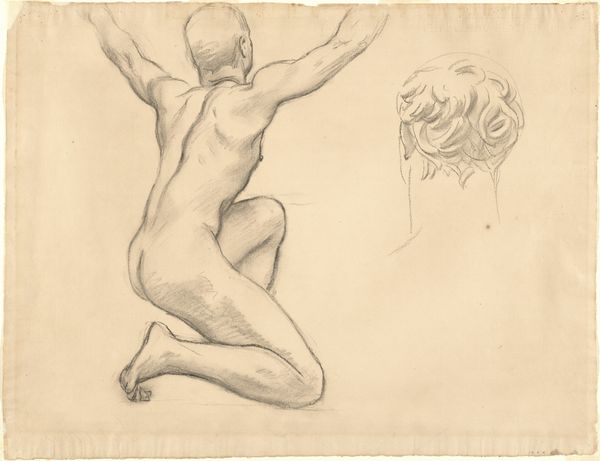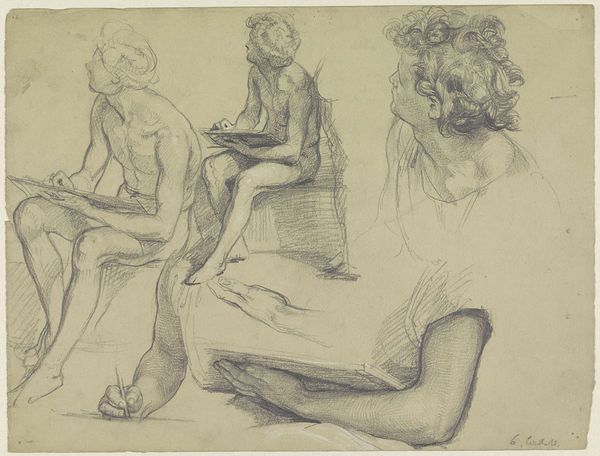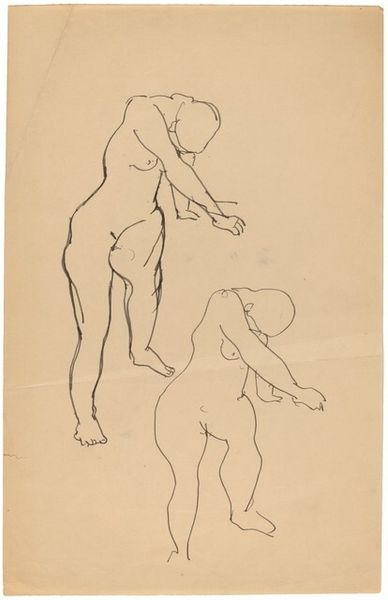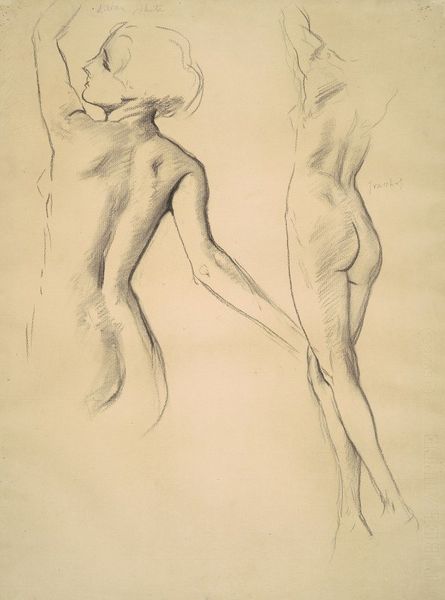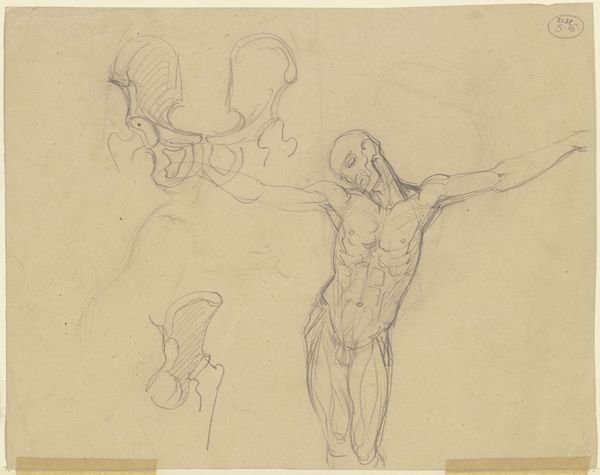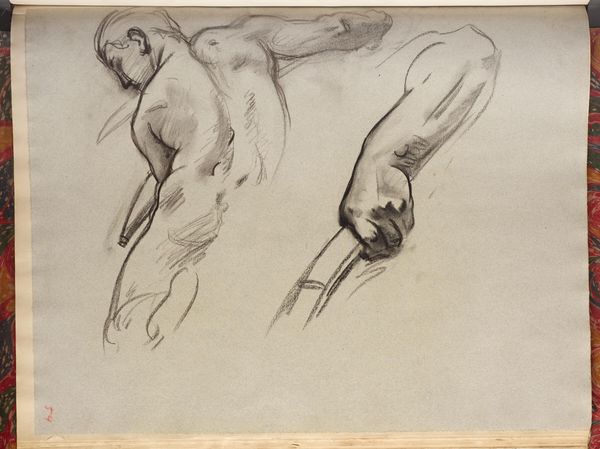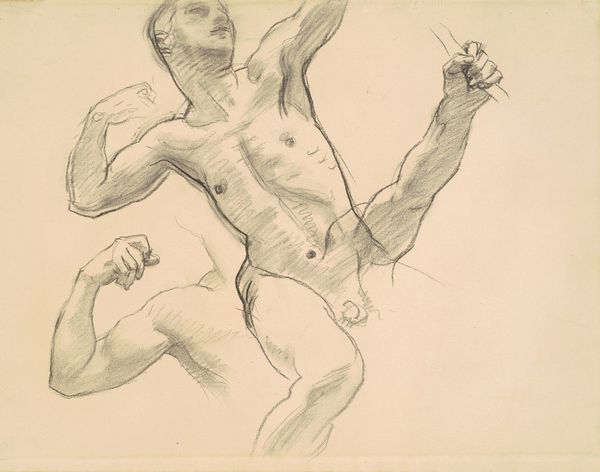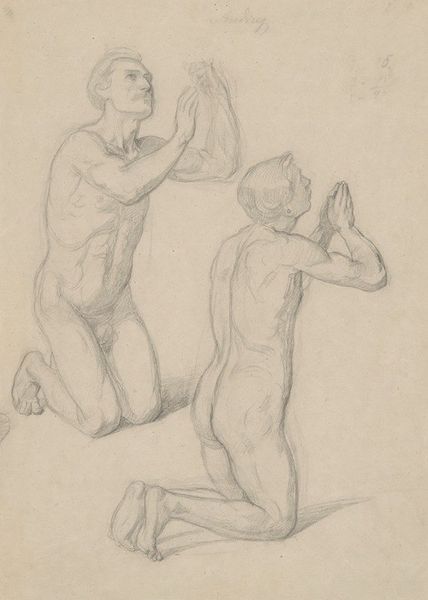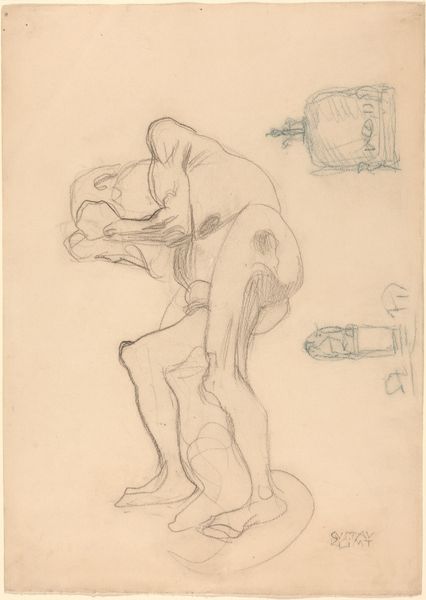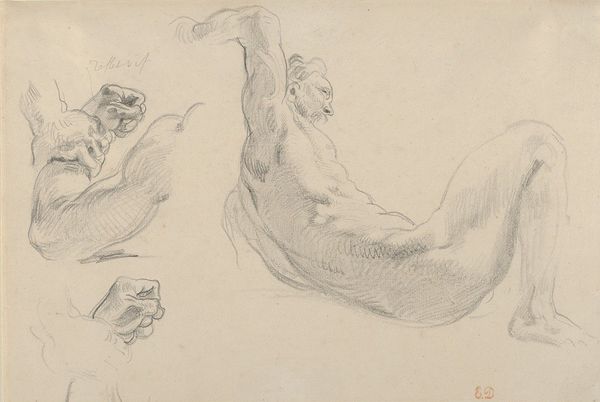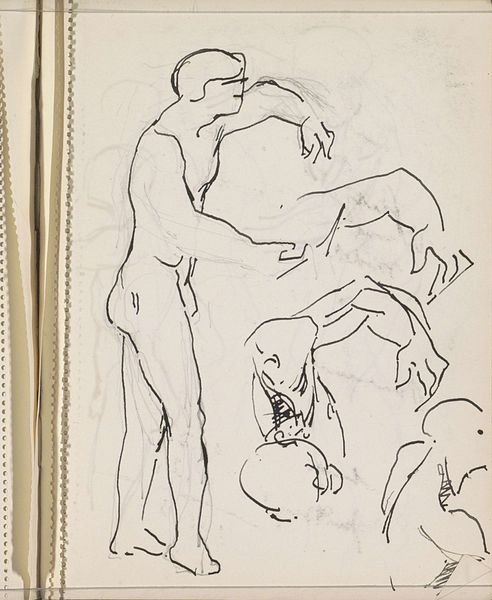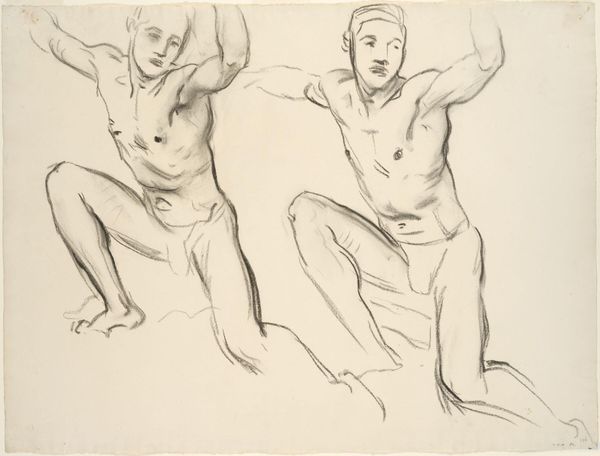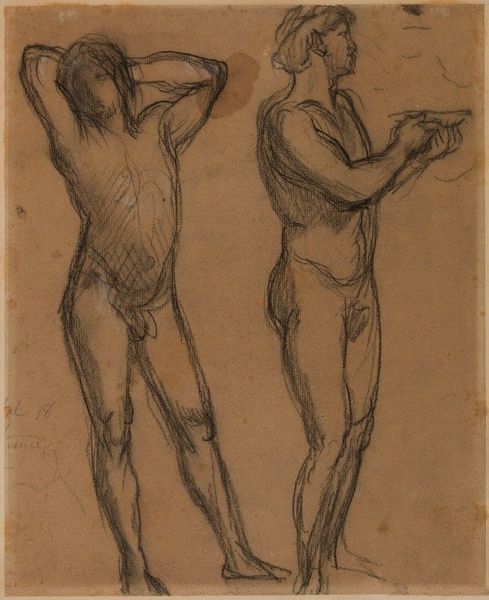
drawing, pencil
#
portrait
#
drawing
#
figuration
#
sketch
#
pencil
#
portrait drawing
#
history-painting
#
academic-art
Copyright: Public Domain: Artvee
Curator: This intriguing drawing is titled "Studies of Notus for 'The Winds'," created by John Singer Sargent between 1922 and 1925. It’s rendered in pencil, showcasing Sargent's mastery even in a seemingly simple medium. Editor: Immediately, the figures strike me as intensely physical, almost theatrical. There's a definite sensuality, but also something caught, like the figures are captured mid-movement. Are we meant to be drawn to them? Curator: Contextually, these are preparatory studies for Sargent’s mural cycle decorating the Museum of Fine Arts in Boston. Understanding that they depict Notus, the Greek god of the south wind, offers us insight. This work operates within traditions of depicting male nudes and their role in defining "masculinity." It’s interesting to consider the male gaze that both shapes this work and, arguably, is catered to here. Editor: I see the classical roots you’re pointing to, yet there is an intentional raw quality to the sketches. The studies give the impression of spontaneous, fleeting images. Sargent captures musculature beautifully, highlighting the tension in the bodies holding what seem to be large, weighted spheres. Curator: Absolutely. Think of how classical sculpture used idealised forms to convey power, but Sargent seems less interested in an unattainable ideal. These feel very much like observational sketches – an artist working through ideas. I wonder, how did notions of masculinity and athleticism prevalent at the time affect Sargent's interpretation of this wind god? And did he intend to question these constructs? Editor: These drawings seem almost incomplete in that sense, or are offering a behind-the-scenes peek at his mural production processes. Considering they were intended as studies rather than finalized art pieces shifts their context, especially viewing them removed from the rest of the murals in their exhibition display. Curator: Precisely! Viewing them in isolation invites us to interpret them with different interpretive models, seeing them as records of the human form. In our contemporary context, and particularly since his works entered the museum spaces we now exhibit them in, we bring our awareness to the inherent politics of viewing and being viewed, influencing our reactions to this imagery. Editor: Thinking about how this work would originally contribute to a larger composition within an academic setting alters our perspective now; and what once might have evoked ideals of strength in men may carry diverse contemporary resonances, prompting new considerations around how bodies and the history of seeing bodies in Western art influence contemporary perceptions of identity.
Comments
No comments
Be the first to comment and join the conversation on the ultimate creative platform.
